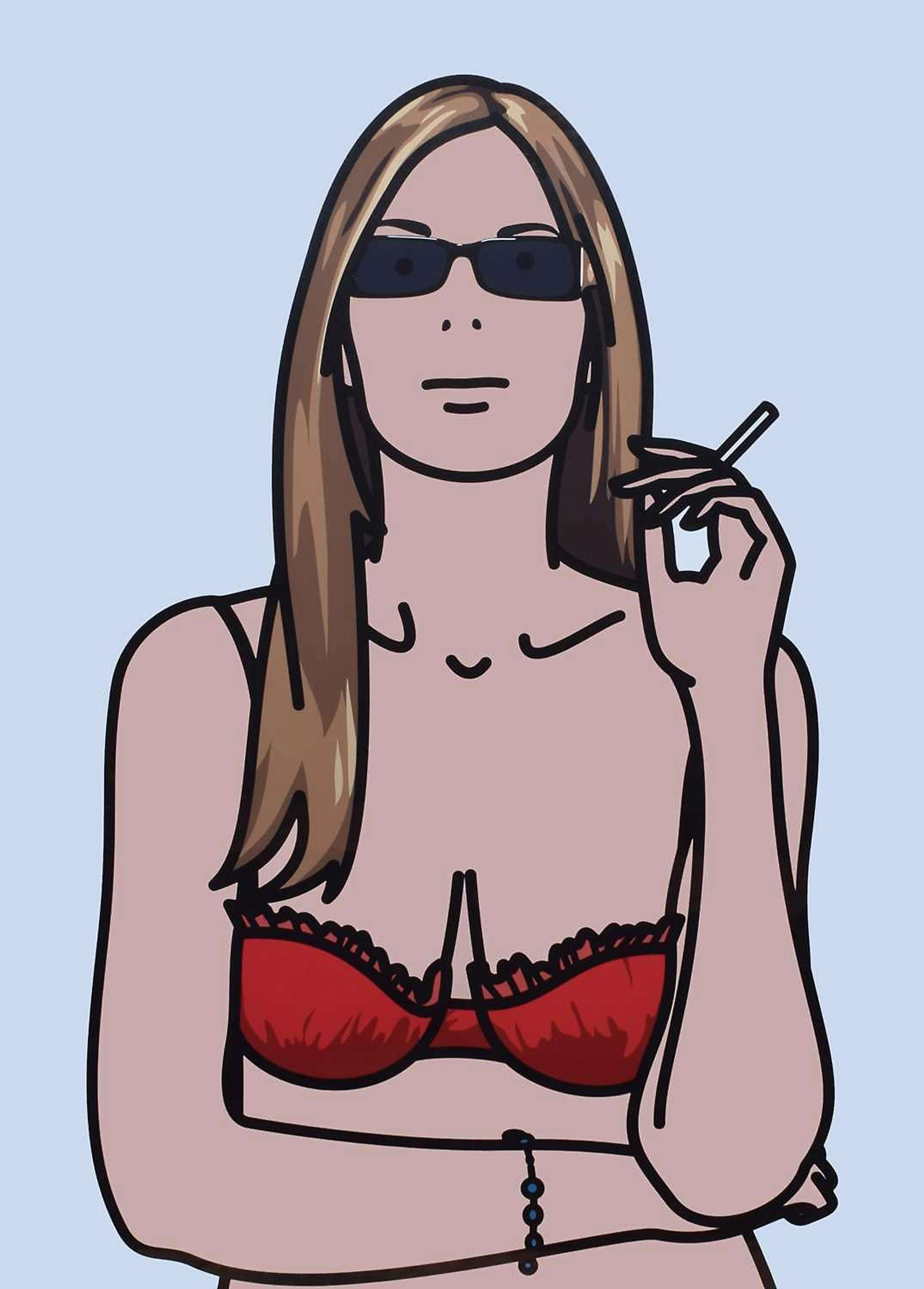
Ruth Smoking 4

Ruth Smoking 4
Signed Print
Julian Opie
Price data unavailable
There aren't enough data points on this work for a comprehensive result. Please speak to a specialist by making an enquiry.
121 x 85cm, Edition of 50, Screenprint
Auction Results

Track auction value trend
Meaning & Analysis
Taken from Julian Opie’s Ruth Smokingseries, Ruth Smoking 4 is a screen print from 2006 that shows a three-quarter length portrait of the subject in a red bra, holding a cigarette in her left hand. The portrait is depicted in Opie’s graphic style, characteristic of his other works during the mid-2000s that use bold outlines and bright colour.
An important aspect for Opie in creating the commissioned portraits of Ruth, an art collector living in Geneva, was the fact that the sitter smoked and had long smooth hair. The element of smoking offered Opie the opportunity to animate this image with wisps of rising smoke in further iterations of the subject, thus allowing him to represent a sense of time through the static portrait.
Inspired by the woodblock prints of Japanese artist Kitagawa Utamaro, as well as early Renaissance painters such as Giovanni Bellini and Fra Angelico, Opie deliberately frames these images of Ruth as three-quarter length portraits to place his work in a historical, painterly context. In referencing historical, classic poses through the medium of computer drawing programmes and photography, Opie aims to distance model and viewer, placing the model in a fictional framework. This fictional role is then recognised as a type by the viewer, allowing for a multitude of interpretations.